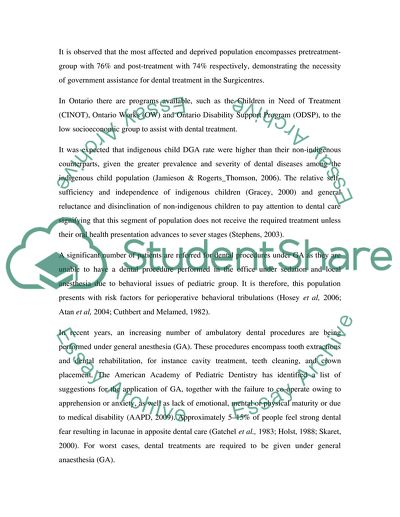Cite this document
(Dental Care under General Anesthesia for Preschool Children Thesis Proposal, n.d.)
Dental Care under General Anesthesia for Preschool Children Thesis Proposal. Retrieved from https://studentshare.org/health-sciences-medicine/1735921-parental-satisfaction-with-dental-treatment-under-general-anaesthesia-in-paediatric-dentistry
Dental Care under General Anesthesia for Preschool Children Thesis Proposal. Retrieved from https://studentshare.org/health-sciences-medicine/1735921-parental-satisfaction-with-dental-treatment-under-general-anaesthesia-in-paediatric-dentistry
(Dental Care under General Anesthesia for Preschool Children Thesis Proposal)
Dental Care under General Anesthesia for Preschool Children Thesis Proposal. https://studentshare.org/health-sciences-medicine/1735921-parental-satisfaction-with-dental-treatment-under-general-anaesthesia-in-paediatric-dentistry.
Dental Care under General Anesthesia for Preschool Children Thesis Proposal. https://studentshare.org/health-sciences-medicine/1735921-parental-satisfaction-with-dental-treatment-under-general-anaesthesia-in-paediatric-dentistry.
“Dental Care under General Anesthesia for Preschool Children Thesis Proposal”, n.d. https://studentshare.org/health-sciences-medicine/1735921-parental-satisfaction-with-dental-treatment-under-general-anaesthesia-in-paediatric-dentistry.


